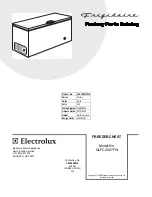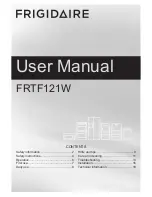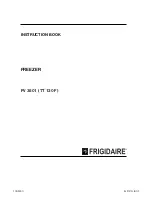
Installation
*
I
N
S
T
A
L
L
A
T
I
O
N
*
77
Danger of damage.
In environments with high humidity
condensation can build up on the
external appliance panels.
Condensate can cause corrosion on
external appliance panels.
To prevent this, it is advisable to
install the refrigeration appliance in a
dry and/or air-conditioned room with
sufficient ventilation.
After installation, make sure that the
appliance doors close properly, the
ventilation gaps are not covered and
that the appliance has been installed
in accordance with these installation
instructions.
Climate range
The appliance is designed for use within
a certain climate range (ambient
temperatures) and should not be used
outside this range. The climate range of
the appliance is stated on the data plate
inside the appliance.
Climate range
Ambient room
temperature
SN
+10 to +32 °C
N
+16 to +32 °C
ST
+16 to +38 °C
T
+16 to +43 °C
Operating in a room which is too cold
will cause the compressor to switch off
for too long, causing the internal
temperature in the appliance to rise with
the risk of food deteriorating and going
off.
Ventilation
If the ventilation gaps given are
not observed, the compressor will
run more frequently and for longer
periods.
This will result in increased energy
consumption and a higher operating
temperature for the compressor. This
may, in turn, cause damage to the
compressor.
It is essential to observe the
ventilation gaps given.
Air at the back of the appliance gets
warm. The appliance housing unit must
therefore be constructed to allow
sufficient space for ventilation (see
“Building-in dimensions”).
– Air intake
occurs via the plinth at
the bottom of the appliance and the
air escapes at the top
at the back
of the housing unit.
– A ventilation gap of at least 40 mm
depth must be allowed for behind the
appliance for air to circulate.
Summary of Contents for KFN 37432 iD
Page 101: ......
Page 102: ......
Page 104: ...M Nr 10 951 260 01 en GB KFN 37432 iD KFNS 37432 iD ...
















































